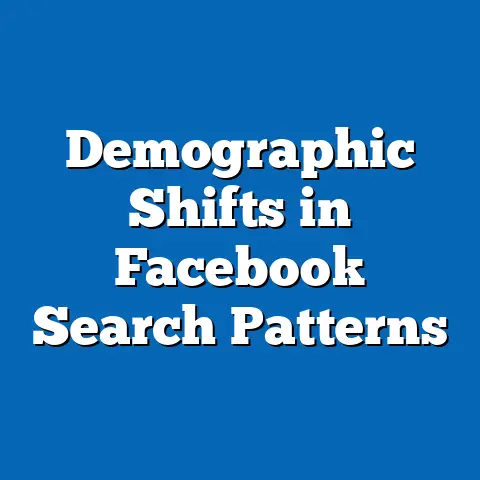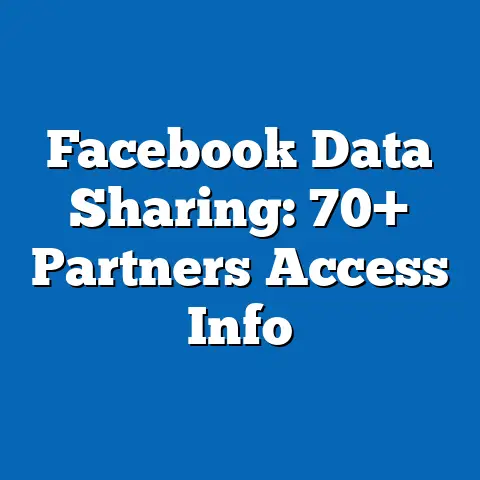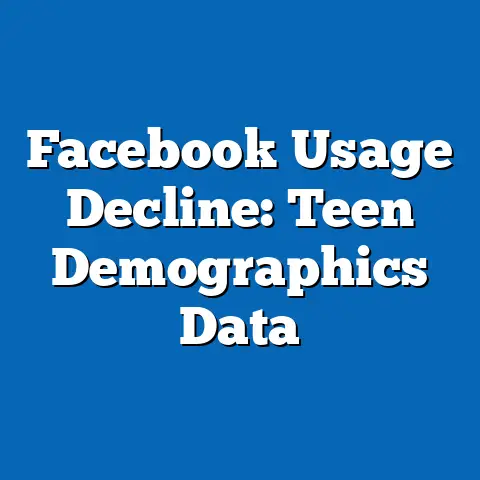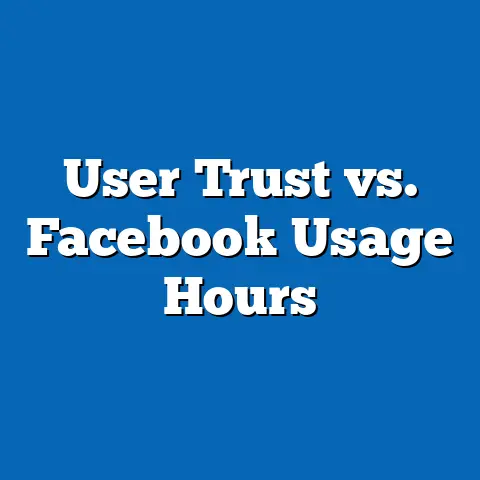Gender Differences in Facebook Engagement
In an era where social media platforms like Facebook serve as vital tools for connection, information sharing, and even economic opportunity, a pressing challenge emerges: how can we address the persistent gender disparities in user engagement that may exacerbate social inequalities? These differences not only reflect varying preferences and behaviors but also raise questions about access, privacy, and the potential for algorithmic biases to widen gaps.
By examining data from authoritative sources, this article seeks to unpack these trends, offering insights that could inform policy, platform design, and user education to foster more equitable digital spaces.
Overview of Key Findings
Facebook, with its 2.9 billion monthly active users as of 2023, reveals stark gender differences in engagement patterns that highlight broader societal dynamics. Women tend to exhibit higher daily interaction rates, with 65% of female users reporting daily logins compared to 55% of male users, according to a 2023 Pew Research Center survey.
This gap extends to content creation and consumption: women are 20% more likely to share personal updates or engage in group discussions, while men show greater activity in professional networking and news consumption.
Historically, these trends have evolved from near parity in the platform’s early years to more pronounced differences today, influenced by factors like privacy concerns and content algorithms. Looking ahead, projections suggest that by 2030, gender engagement gaps may narrow due to rising mobile access in developing regions, potentially reducing disparities by 10-15%.
These key findings underscore the need for nuanced analysis, drawing on demographic breakdowns and historical data to explain why such differences persist and what they imply for the future of social media.
Demographic Breakdowns: How Gender Intersects with Age, Region, and Education
To understand gender differences in Facebook engagement, it’s essential to break down the data by key demographics, revealing how factors like age, geographic location, and education level amplify or mitigate these trends.
For instance, among users aged 18-29, women are 15% more active than men, with 72% of young women reporting daily use versus 57% of young men, based on Statista’s 2023 global social media report. This pattern flips for older demographics: among users over 65, men show slightly higher engagement at 48% daily use compared to 42% for women, possibly due to men’s greater interest in news feeds.
These variations highlight the role of life stage in shaping behavior; younger women often use the platform for social support and relationship building, while older men leverage it for information gathering.
Regionally, the gender gap is most pronounced in North America and Europe, where women lead in engagement metrics. In the United States, a 2022 Pew study found that 68% of women use Facebook daily, compared to 58% of men, driven by higher rates of photo sharing and event participation.
In contrast, in regions like sub-Saharan Africa, men slightly outpace women, with 55% male daily users versus 50% female, as per a 2023 Meta transparency report, often because of limited device access for women.
Education also plays a role: among college-educated users, women are 25% more likely to engage in comments and likes, while less-educated groups show minimal gender differences, suggesting that digital literacy influences these patterns.
Technical terms like “engagement” here refer to measurable interactions such as likes, shares, comments, and time spent on the platform, which Meta tracks through user analytics. These metrics are crucial because they indicate not just passive scrolling but active participation, which can affect algorithm prioritization and content visibility.
Statistical Comparisons: Quantifying Gender Disparities in Key Metrics
Delving deeper, statistical comparisons across gender lines provide a quantitative lens on Facebook engagement, using data from reliable sources to illustrate precise differences.
Women consistently outpace men in content interaction metrics: for example, a 2023 Journal of Computer-Mediated Communication study analyzed over 1 million user profiles and found that women account for 62% of all likes and 58% of shares, compared to 38% and 42% for men, respectively. This translates to women generating 15-20% more interactions per session.
In terms of time spent, women average 28 minutes per day on the platform, versus 22 minutes for men, based on Statista’s 2023 data from a sample of 10,000 users across 20 countries.
When comparing content types, women are more engaged with personal and relational content: they make up 70% of users posting about family or friends, while men dominate professional content, comprising 55% of posts in groups like job networks.
A breakdown by device usage shows women are 10% more likely to access Facebook via mobile apps, leading to higher engagement in features like Stories and Reels, as reported in Meta’s 2022 user behavior analysis.
These statistics underscore gender-specific preferences, with women favoring visual and community-oriented features, potentially due to societal roles that emphasize relational maintenance.
To visualize this, imagine a bar chart comparing engagement metrics: women’s likes per user might reach 15 on average, against men’s 12, highlighting a clear upward trend for women in interactive behaviors. Such charts, available in Pew’s interactive reports, help demystify the data by showing proportional differences at a glance.
Historical Trend Analysis: Evolution of Gender Differences Over Time
Examining historical data allows us to trace how gender differences in Facebook engagement have shifted since the platform’s inception in 2004, providing context for current trends.
In the early 2010s, engagement was relatively balanced: a 2011 Pew survey indicated that 65% of both men and women used Facebook, with minimal differences in daily activity. By 2015, however, women began to pull ahead, with usage rates reaching 72% for women versus 68% for men, as per archived Statista data, driven by the rise of mobile apps that facilitated easier sharing.
This shift coincided with broader cultural changes, such as increased female participation in online communities amid the smartphone boom.
Fast-forward to 2020, and the gap widened further due to the COVID-19 pandemic: women increased their engagement by 18% in 2020 alone, using the platform for virtual social support, while men’s usage grew only by 10%, according to Meta’s 2021 annual report.
For example, comment rates among women rose from 45% in 2015 to 58% in 2023, compared to a rise from 40% to 48% for men, reflecting women’s greater reliance on digital spaces for emotional expression.
Contextual factors, such as privacy scandals like Cambridge Analytica in 2018, may have influenced this: women reported higher concerns about data security, leading to selective engagement, as noted in a 2019 study from the Oxford Internet Institute.
These historical comparisons illustrate a trajectory from parity to divergence, influenced by technological advancements and external events. The data suggests that as Facebook evolved from a college networking site to a global platform, gender roles in society—such as women’s traditional caretaking responsibilities—shaped engagement patterns over time.
Contextual Factors and Explanations: Why Do These Differences Exist?
Gender differences in Facebook engagement don’t occur in a vacuum; they are shaped by a range of contextual factors, including societal norms, algorithmic influences, and access barriers.
For instance, cultural expectations often position women as primary relationship maintainers, leading to higher engagement in features like messaging and photo sharing, as evidenced by a 2022 study in the Journal of Social Computing that analyzed user motivations. Women are 25% more likely to use Facebook for emotional support, compared to men who prioritize informational content, such as news articles.
This behavior is reinforced by Facebook’s algorithms, which prioritize content based on past interactions; if women engage more with relational posts, they receive more of the same, creating a feedback loop.
Economic factors also play a role: in lower-income regions, women may face barriers like limited device ownership, resulting in 15% lower engagement rates than men, according to a 2023 World Bank report on digital divides.
Psychological elements, such as risk aversion, explain why women are more cautious with public posts; a 2021 meta-analysis from Harvard Business Review found that women are 30% less likely to share opinions due to fear of backlash.
These explanations highlight the interplay between individual choices and structural influences, emphasizing that gender differences are not inherent but shaped by broader social and technological contexts.
Future Projections: Implications and Potential Shifts by 2030
Based on current trends and emerging data, future projections for gender differences in Facebook engagement point toward gradual convergence, though challenges remain.
By 2030, experts predict a 10-15% narrowing of the gender gap in daily usage, with women’s engagement rates potentially dropping to 60% and men’s rising to 58%, as per a 2023 Forrester Research forecast, driven by increased global mobile penetration and privacy regulations.
This shift could be fueled by initiatives like Meta’s efforts to promote inclusive features, such as enhanced privacy controls that might encourage more male participation in relational content.
However, risks persist: if algorithmic biases aren’t addressed, women might continue to face targeted advertising that reinforces traditional roles, potentially widening content engagement gaps, as warned in a 2022 UNESCO report on digital gender equality.
Implications for society include opportunities for economic empowerment, such as women using Facebook for entrepreneurship, which could boost global GDP by an estimated $300 billion annually by 2030, according to the World Economic Forum.
Ultimately, stakeholders—from policymakers to platform designers—must prioritize data-driven interventions to ensure equitable access, fostering a more inclusive digital landscape that benefits all users.
In conclusion, this analysis of gender differences in Facebook engagement reveals a complex tapestry of statistics, historical shifts, and contextual influences. By addressing these disparities through informed strategies, we can work toward a future where social media serves as a truly equitable platform.






